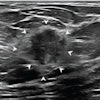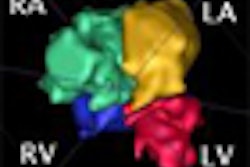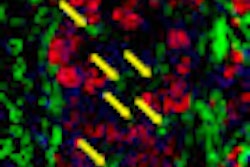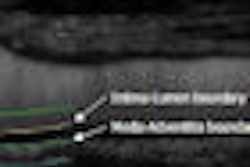Wednesday, December 2 | 3:40 p.m.-3:50 p.m. | SSM21-05 |Room S403A
In this afternoon presentation, Japanese researchers will discuss their application of a computer-aided detection (CAD) algorithm to volumetric breast ultrasound images.A team from several institutions in Japan scanned a patient population with 67 breast masses using a prototype volumetric full-breast ultrasound scanner (ASU-1004, Aloka, Tokyo). Data were obtained from 2007 to 2009.
For each breast, a stack of slices at 1-mm intervals were acquired in axial views, with each slice consisting of 694 x 400 pixels with a pixel size of 0.23 mm. Biopsy-proven breast masses were delineated manually, and associated volumes of interest (VOI) were defined.
The volumes of interest were then measured using six characteristics: mass homogeneity, compactness, orientation, depth-to-width ratio, and two echo signal intensity ratios. The CAD algorithm then applied a linear discriminant analysis for the six characteristics to differentiate masses. The CAD software application was developed internally, according to presenter Dr. Gobert Lee, who performed the research while at Gifu University in Japan. He is currently at Flinders University in Australia.
The researchers found the CAD application to have a sensitivity ranging from 92% to 97%, while specificity was better than 80%. They concluded that CAD applied to volumetric breast ultrasound images had a high level of accuracy for differentiating malignant from benign masses.



















